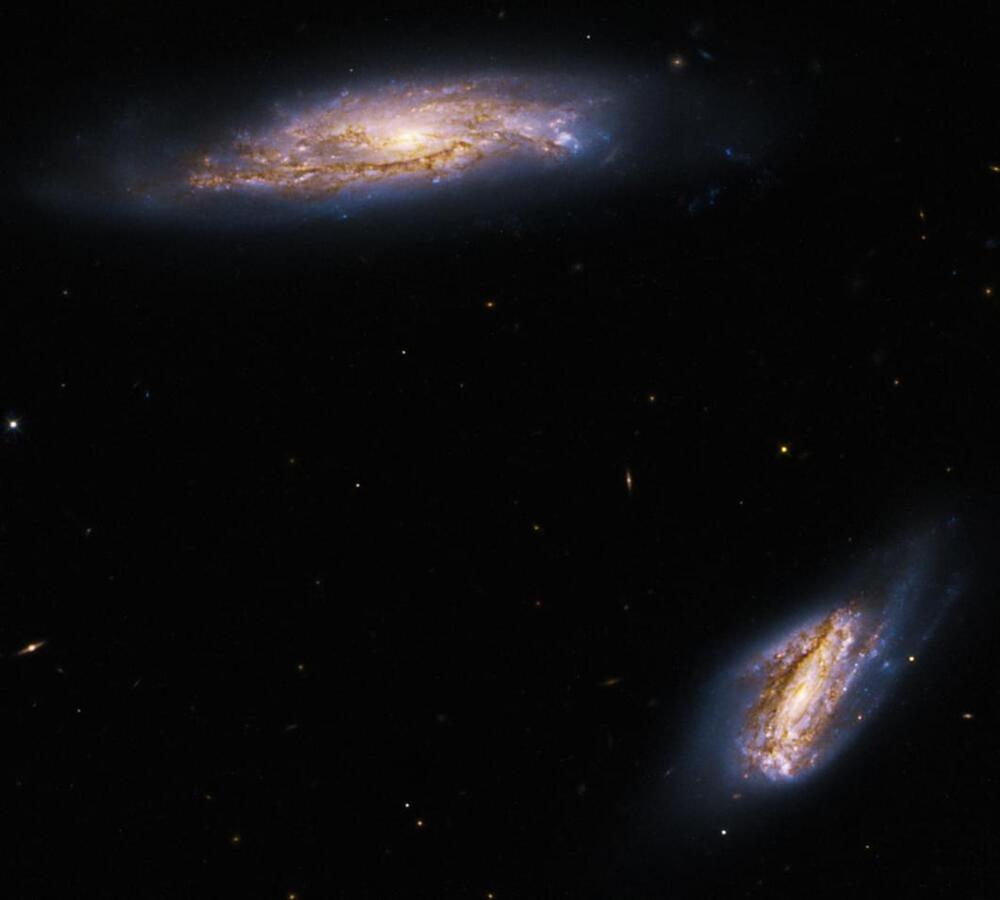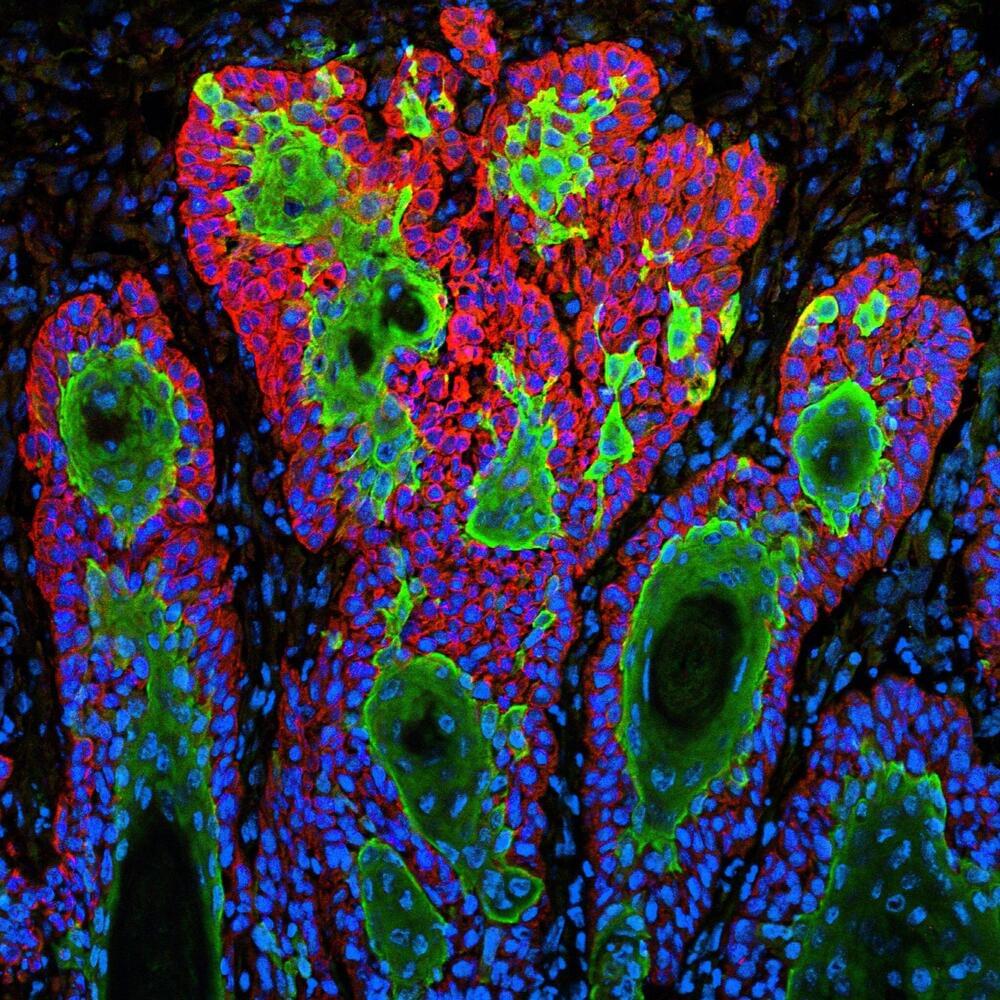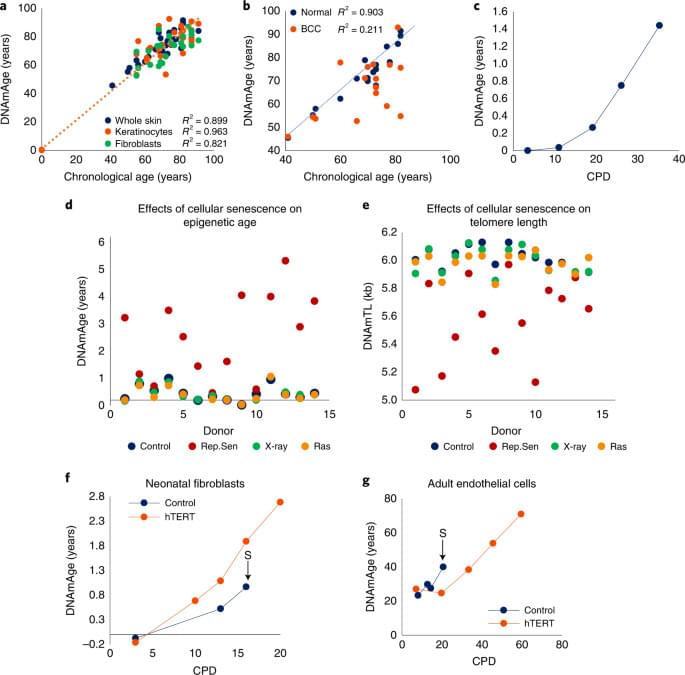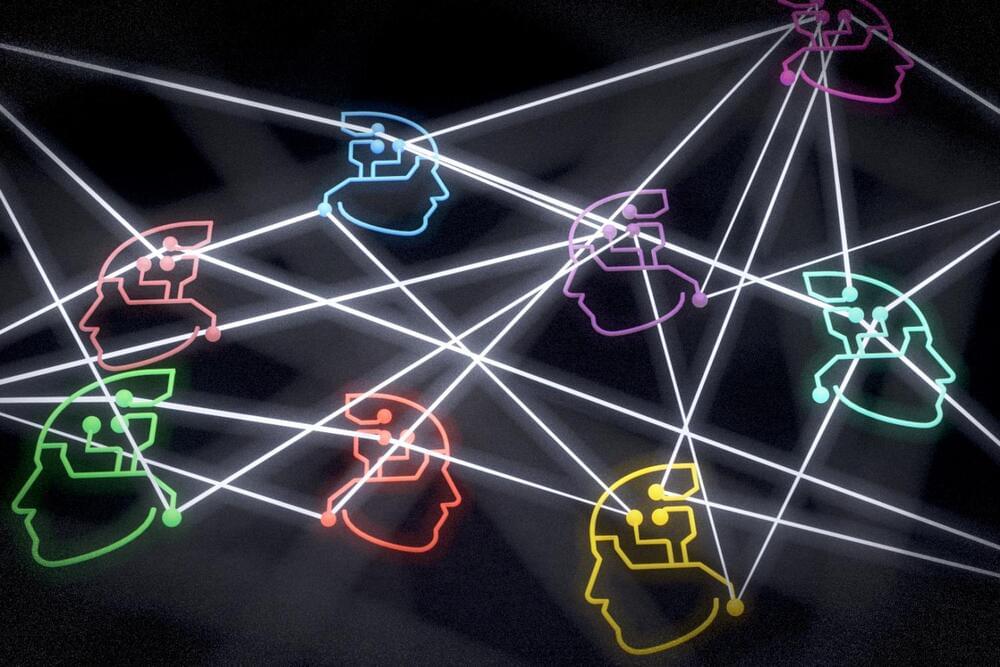May 29, 2022
Two galaxies captured by Hubble are hotbed of star formation
Posted by Genevieve Klien in category: space
This week’s image from the Hubble Space Telescope shows two galaxies that are a hotbed of star formation. The pair, known together as Arp 303 or individually as IC 563 on the bottom right and IC 564 on the top left, are located 275 million light-years away. They are in the dim constellation of Sextans, named after the astronomical instrument used to measure the position of stars.
The image below was captured by two Hubble instruments during two separate observations. The two observations were combined to show both visible light data and data from the infrared part of the spectrum.
“The image holds data from two separate Hubble observations of Arp 303,” Hubble scientists write. “The first used Hubble’s Wide Field Camera 3 (WFC3) to study the pair’s clumpy star-forming regions in infrared light. Galaxies like IC 563 and IC 564 are very bright at infrared wavelengths and host many bright star-forming regions.


















